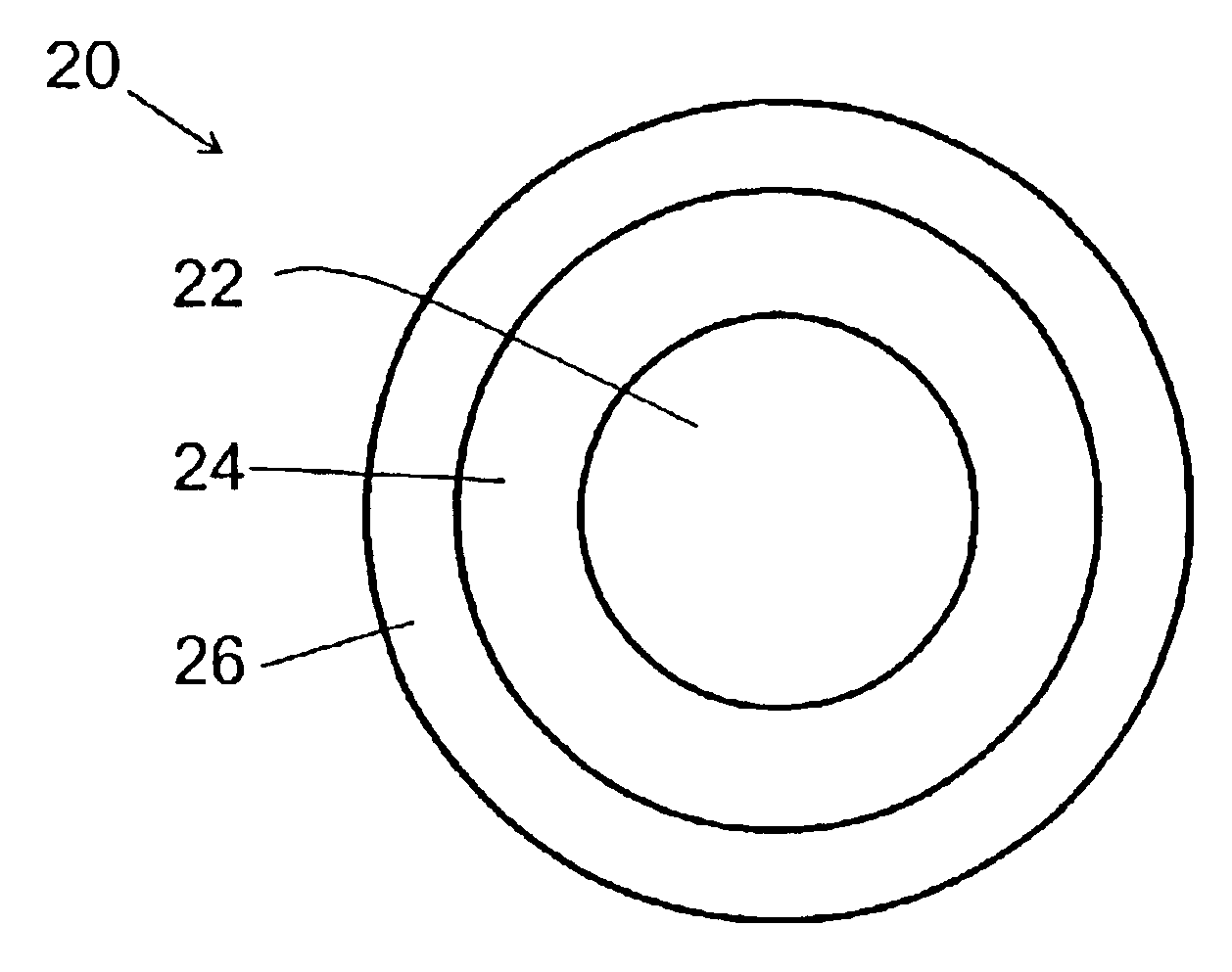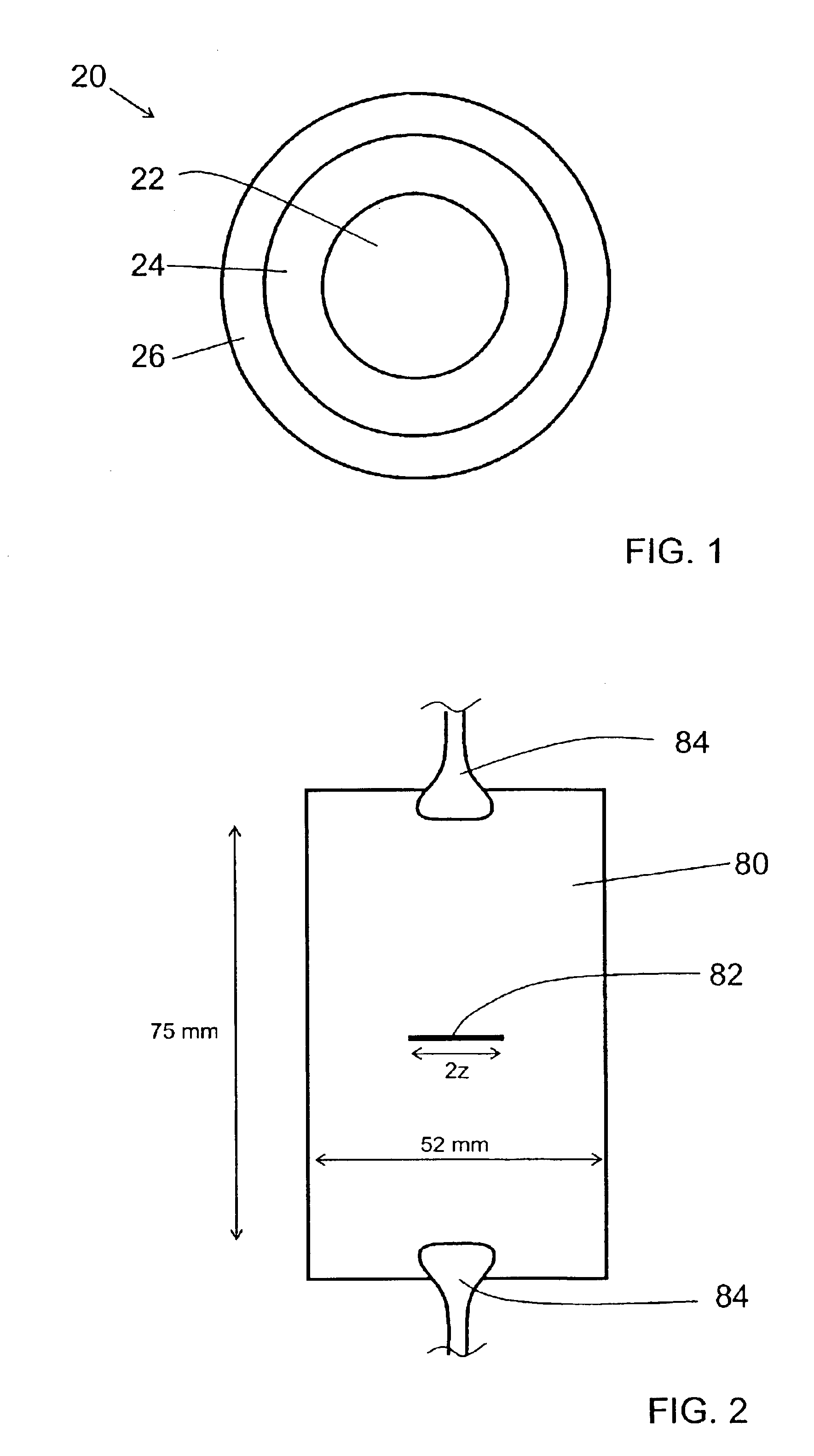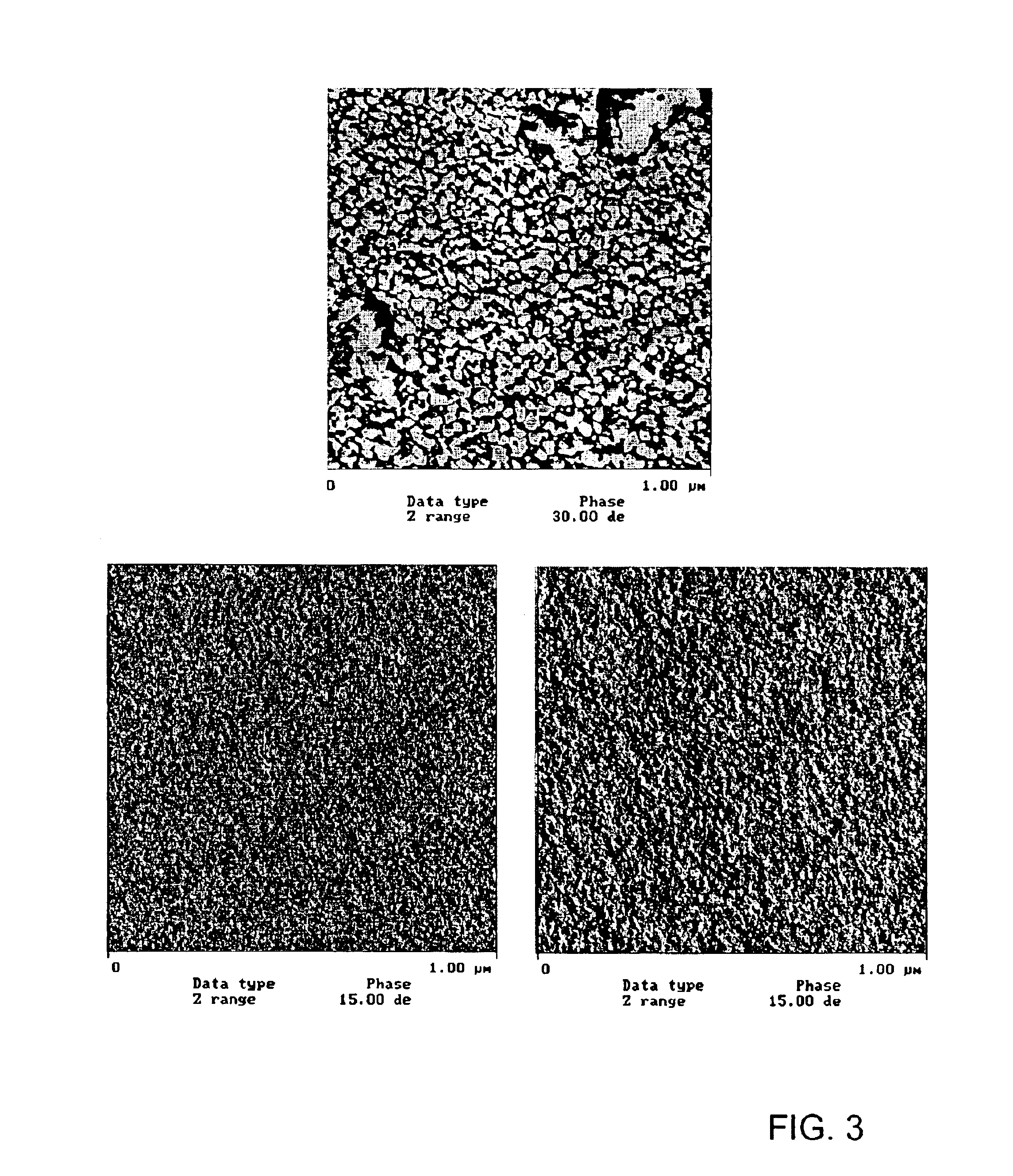Coated optical fiber and curable compositions suitable for coating optical fiber
- Summary
- Abstract
- Description
- Claims
- Application Information
AI Technical Summary
Benefits of technology
Problems solved by technology
Method used
Image
Examples
example 1
Oligomer Synthesis
Example oligomers 1-33 were synthesized as described below. Unless otherwise specified, processes conducted under vacuum were conducted at pressures on the order of 1 Torr. The dibutyltin dilaurate, 4-methoxyphenol (MEHQ), phenothiazine and 2,6-di-tert-butyl-4-methylphenol (BHT) were purchased from Aldrich Chemical Co. Polyols used to prepare oligomers were generally heated at 40-50° C. for 12 h under vacuum to remove traces of water prior to use. All other materials were used as received.
Urethane acrylate oligomer 1 with the average structure CLA—OOC—NH—H12MDI—NH—COO—CLA was prepared by mixing 35.0 g (0.133 mole) DESMODUR W (H12MDI(NCO)2, Bayer) with 91.8 g (0.266 mole) caprolactone acrylate (Sartomer, SR495) along with 190 mg dibutlyltin dilaurate and 190 mg BHT at 20° C. The mixture was stirred at this temperature for 1.5 h, and then was heated at 75-85° C. for 3 h.
Urethane acrylate oligomer 2 with the average structure GlyPO(725)[OOC—NH—H12MDI—NH—COO—HEA]3 was ...
example 2
Formulation of Curable Compositions
Curable compositions 1-37 were formulated in a jacketed beaker heated to 70° C. using a high-speed mixer. In each case, the components were weighed into the jacketed beaker using a balance and allowed to mix until the solid components were thoroughly dissolved and the mixture appeared homogeneous. Curable compositions are formulated such that the amounts of oligomer, monomer, and photoinitiator total 100 wt %; other additives such as antioxidant are added to the total mixture in units of pph. For oligomers which are provided as a 1:1 mixture of oligomer and monomer, only the oligomeric component is counted as oligomer. For example, a curable composition made with 20% of a 1:1 mixture of oligomer 9 with PHOTOMER 4028 would have 10% oligomer. Table 4 lists the compositional details for each composition. Each composition also includes 1.5% IRGACURE 184, 1.5% IRGACURE 819, and 0.5 pph IRGANOX 1035, each of which is available from Ciba. BLANKOPHOR KLA i...
example 3
Cured Polymer Material Properties
Curable compositions 1-37 of Example 2 were used to make rod samples for tensile testing. Rods were prepared by injecting the curable compositions into TEFLON tubing with an inner diameter of about 0.025″. The samples were cured using a Fusion D bulb at a dose of about 2.6 J / cm2 (measured over a wavelength range of 225-424 nm by a Light Bug model IL390 from International Light). After curing, the TEFLON tubing was stripped, leaving rod samples about 0.0225″ in diameter (after shrinkage due to cure). The cured rods were allowed to condition overnight in a laboratory with a controlled temperature of 23° C. and a controlled relative humidity of 50%. Young's modulus, tensile strength, and percent elongation to break were measured for each material using a Sintech MTS Tensile Tester. Yield stress was measured at the same time as the other tensile data for certain of the materials. The gauge length was 5.1 cm, and the test speed was 2.5 cm / min. The reporte...
PUM
| Property | Measurement | Unit |
|---|---|---|
| Length | aaaaa | aaaaa |
| Fraction | aaaaa | aaaaa |
| Pressure | aaaaa | aaaaa |
Abstract
Description
Claims
Application Information
 Login to View More
Login to View More - R&D
- Intellectual Property
- Life Sciences
- Materials
- Tech Scout
- Unparalleled Data Quality
- Higher Quality Content
- 60% Fewer Hallucinations
Browse by: Latest US Patents, China's latest patents, Technical Efficacy Thesaurus, Application Domain, Technology Topic, Popular Technical Reports.
© 2025 PatSnap. All rights reserved.Legal|Privacy policy|Modern Slavery Act Transparency Statement|Sitemap|About US| Contact US: help@patsnap.com



